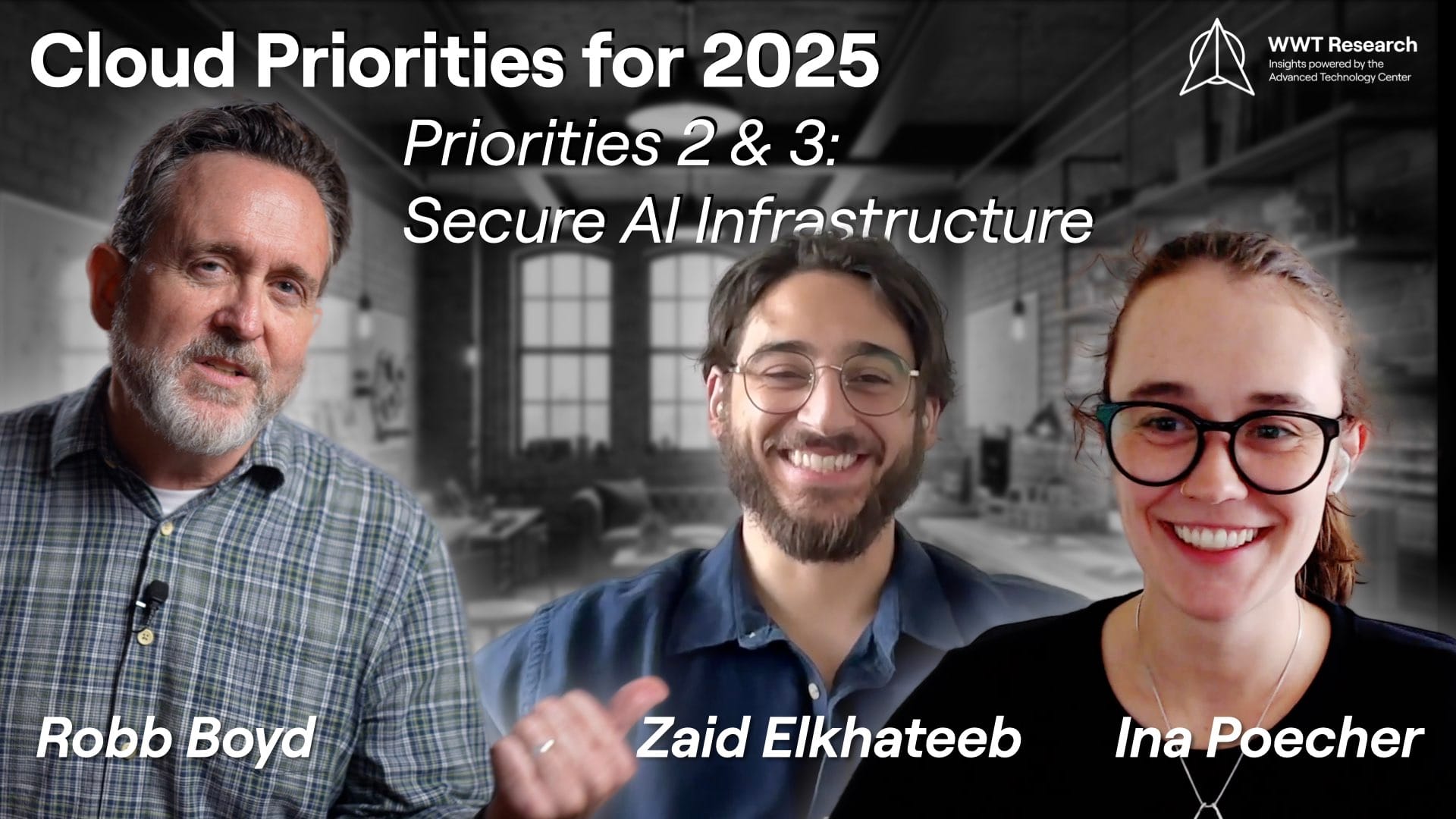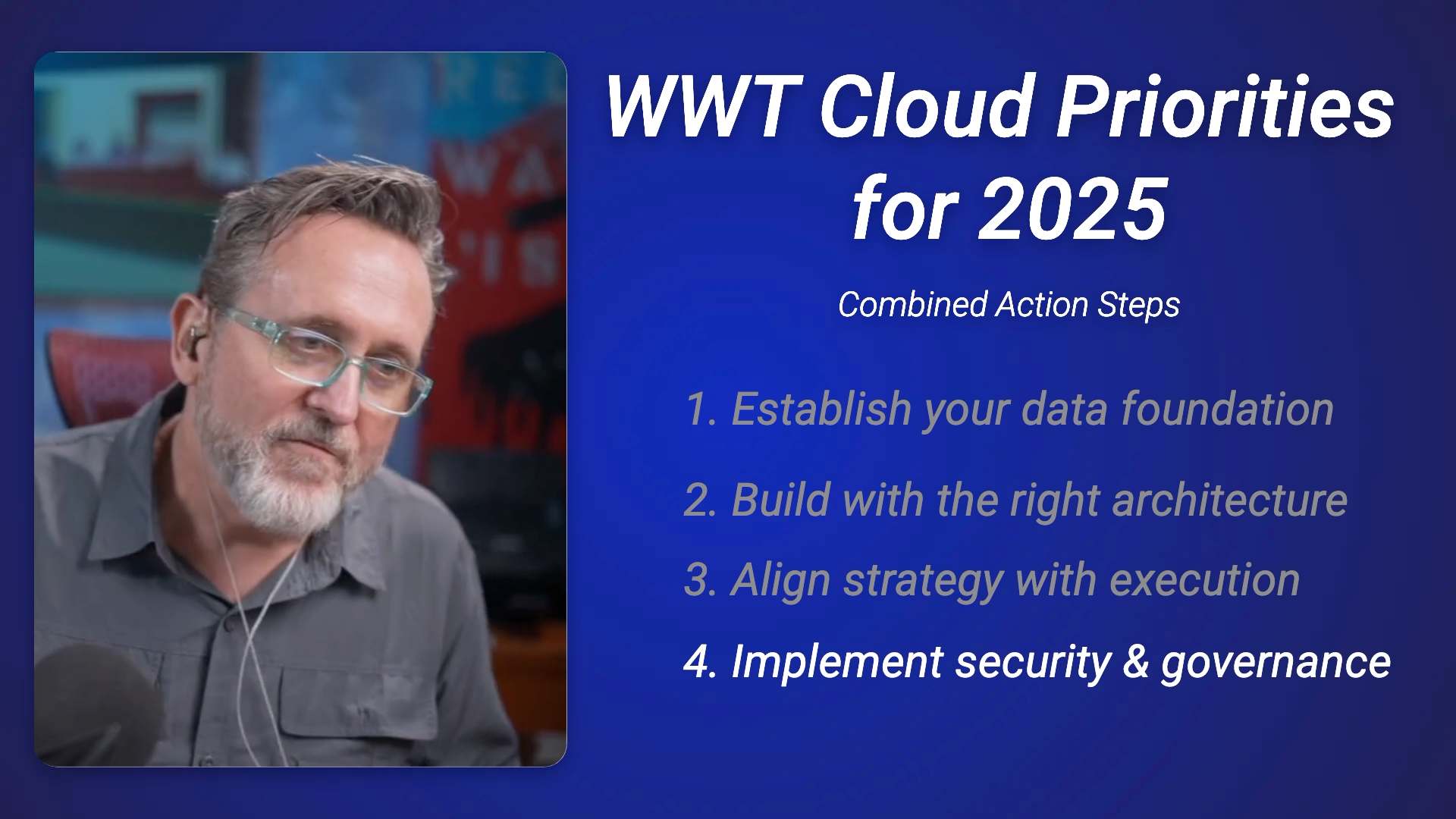The 80% Rule That's Killing Your AI Dreams (And the Four-Step Recovery Plan)
More than 80% of AI projects fail before the first model runs. The reason? Organizations skip the boring stuff—data quality, security, proper cloud infrastructure—and jump straight to the transformative part. Here's the four-step recovery plan that actually works.

Something Ina said made me realize why most AI projects are doomed before they even start: "80% of your problem is a data problem."
That hit me like a ton of bricks. Here's what that means in practice: You spend months getting excited about your breakthrough AI initiative, securing budget, assembling teams, maybe even hiring expensive consultants. But then you discover your data is a mess, your security is an afterthought, and your cloud infrastructure wasn't designed for the workloads you're throwing at it.
Sound familiar?
I just wrapped our latest research conversation with Ina Poecher, a data scientist who bridges the gap between what data scientists want to build and what actually works in production, and Zaid Elkhateeb, a technical solutions architect who specializes in helping organizations escape the AI corners they've backed themselves into.
What they shared isn't just about being more efficient with AI - it's about understanding why more than 80% of AI projects fail and how the winners are approaching this completely differently.
The Reality Check That Changes Everything
Zaid has this way of describing the pattern he sees repeatedly: organizations purchase AI tools in a bubble, without looking at the outcome they're actually trying to achieve. "And so they'll purchase a product or they'll start using a technology, and it doesn't necessarily fit the outcome that they are looking for, or it's not the only thing that's going to get them to the outcome that they're looking for."
The politics are brutal. C-level executives get sold on impressive demos by people they trust. Suddenly there's a "generative AI initiative that is a little too lofty" and everyone's scrambling to hit goals without looking at the entire roadmap.
Here's where it gets expensive: "That's when the customer started bleeding money for sure," Zaid told me. Because by the time you discover your data isn't ready, your security wasn't baked in, or your infrastructure can't scale, you're already mid-project with timelines and budgets spiraling out of control.
Why Security Can't Be an Afterthought
Ina made this crystal clear: "When you throw it on, I think a little extra layer at the end. It's not baked all the way through."
Think about what that means. You're building AI models on vulnerable data pipelines. You're storing model weights without proper protection. Someone could inject malicious data during collection, or worse, steal your entire model after you've invested months of development time.
"If you're not securing your model weights files and somebody's able to get them and they're able to just basically steal your model for lack of a better term, then all of a sudden all that time and effort that you put in is just—it's gone."
But here's what struck me: data scientists aren't trained for this. As Ina admitted, "You don't really learn a lot about cybersecurity in your data science curriculum." Meanwhile, the ecosystem has moved forward at such a rapid pace that security is being left behind.
The solution? Cross-functional teams from day one. Security experts who understand AI, data scientists who understand security risks, and common language that bridges both worlds.

The Four-Step Recovery Plan
What emerged from our conversation is a practical roadmap that avoids the typical "boil the ocean" mistake:
1. Establish Your Data Foundation
This is where Ina's 80% rule becomes actionable. Before you get excited about any AI use case, ask these questions:
- Is the data actually there?
- Do you have access to all relevant data sources?
- Is it full of rich information or just empty values?
Ina was blunt: "And when the data's not there as that foundation, then there's not much you can do for your use case, and you're just stuck trying to create something out of nothing."
2. Build with the Right Architecture
Zaid walked me through the difference between proof-of-concept and production-ready architecture. For their recent demo, they spun up a working AI solution in ten minutes using Google Cloud. But as he emphasized, "But then to answer the original question, it's—it was just a POC, right? There's so many other things that we need to consider."
The key insight: cloud gives you incredible flexibility for prototyping, but don't confuse demo speed with production readiness. Set expectations correctly about what you're showing versus what you're building.
3. Align Strategy with Execution
"Everybody wants to boil the ocean," Zaid told me. The pattern is always the same - customers want to solve everything at enterprise scale immediately.
His approach? Start with the outcome, not the tool. "Focusing on the outcome that they wanna see, and what their future, ideal future state looks like, really gives me a good ground to understand where we should go." Once you understand what they're actually trying to achieve, you can level-set expectations and narrow the scope to ensure success.
Ina's perspective from the data science side reinforced this: think spiral, not circle. Start small, build a solid foundation you can reuse, then iterate and expand. "When you start small and you're able to build that solid foundation that you can then reuse and build upon, then you have the ability to do this exponential growth."
4. Implement Security and Governance
His approach on governance surprised me: "But governance to me, I think starts first and foremost with education."
You can't just bolt on compliance tools without understanding what framework you're implementing. But once you're educated and have established your approach, the cloud tools are there to help - whether it's data labeling and tagging or compliance standards that automatically flag violations.
Ina's advice was even more direct about governance timing. Based on the conversation, she emphasized the importance of incorporating governance from the beginning rather than retrofitting it later. Because trying to retrofit governance after you've built your solution often means discovering that the exact piece of information your model relies on violates a policy you didn't know about.
The Practical Truth About AI Readiness
What keeps me thinking about this conversation is how it reframes the entire AI discussion. This isn't about whether AI works - it clearly does. It's about whether your organization is ready to make AI work.
The companies dominating with AI aren't the ones who moved first. They're the ones who moved right - who understood that boring data governance and infrastructure work is what makes breakthrough AI possible.
The most dangerous AI strategy isn't the one that fails fast. It's the one that fails slow, bleeding resources for months while everyone pretends it's going to work.

What This Means for Your AI Strategy
If you're already stuck in an AI initiative that's burning cash without delivering results, remember Ina's 80% rule. Chances are, your problem isn't with the AI - it's with the data foundation underneath it.
If you're just starting your AI journey, these four steps give you a roadmap that avoids the expensive mistakes most organizations make. Start with your data foundation, build the right architecture for your actual needs, align your strategy with realistic execution timelines, and bake security in from day one.
The question isn't whether you can afford to build AI properly. It's whether you can afford to keep building it wrong while your competitors figure it out.
Links to Resources:
- Download WWT's complete Cloud Priorities for 2025 Research
- Watch the original at WWT: What AI Winners Know: The Build Matters More Than the Model
- Explore WWT's Advanced Technology Center resources
The organizations that nail these fundamentals won't just save money on failed AI projects. They'll be the ones who can rapidly deploy game-changing AI solutions while their competitors are still trying to clean up their data mess.
Cheers!
Robb


